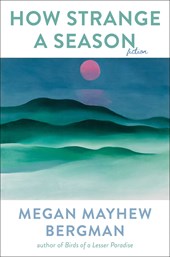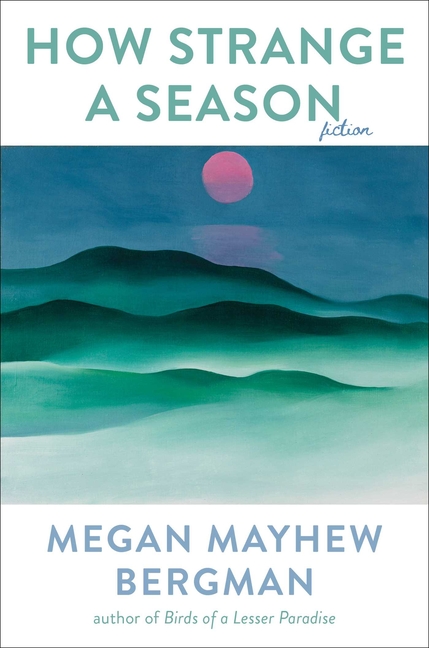How Strange a Season: Fiction
March 24, 2022
In these dark Americana stories, women seek cathartic releases of their pent-up mental, emotional, and physical energy in the same way the earth communicates neglect through landslides, droughts, collapsing marine ecosystems, fierce winds, and rising seas.
How Strange a Season: Fiction by Megan Mayhew Bergman, Scribner
Journalist, essayist, and critic Megan Mayhew Bergman’s third book of stories, How Strange a Season, magnifies humans’ internal conflicts—indecisions, curiosities, traumas, and anxieties—as the natural world very slowly deteriorates around them.
There’s a definite feminist, female empowered, feeling of solidarity throughout the book as most main characters are women in or recovering from damaged relationships. Many of these characters have closer relationships with flora and fauna than they do with other humans. In “The Heirloom,” Regan’s mother’s best friend was her horse named Jillian, and Regan “inherited her mother’s suspicion that at some point relationships with men moved from pleasure to pain, and never righted themselves again.” To Marianna in “Workhorse,” growing a terrarium full of flowers comes more easily than repairing her relationship with her “gently estranged” husband or dealing with her querulous and overbearing father. Farrah in “Wife Days” shirks her husband’s desires for a baby in favor of competitive swimming, though it’s more in competition with herself than others:
Now swimming holds one purpose only: it holds the crazy at bay. She’s convinced that swimming beats back the insanity, that exhaustion brings her clarity, and the only way to keep this clarity is to swim harder and longer.
In this story, Farrah’s swim is intercut with scenes of the downfalls of her family’s matriarchs and the instability of their relationships with one another. Though she may be as troubled as her mother and grandmother, Farrah finds the strength to endure through the water’s promise of rebirth.
Characters’ attempts at control are emphasized and challenged by the instability of the natural world. In "Inheritance,” Hayes pretends to be a fiber artist living in her van while actually working at a natural health clinic and staying in her late grandmother’s large house on the cliffs of California. But after weeks of trying to sculpt herself a new life, partially inspired by her grandmother Paulina and partially on a quest to discover who her grandmother actually was, Hayes’s routine is shaken up by a printed notice on the gate reading “This dwelling may not be safe during heavy rains.” Hayes is:
jealous that Paulina had lived the last of the good lives on this coast, when the specter of climate change hadn’t loomed over everything, when you could look at the purple iris or a sherbet-colored sunset without the compulsion to photograph it … One day the glass house would be ushered into the sea by a wave of mud, she thought. It would shatter on the rocks below.
Throughout the stories, women seek cathartic releases of their pent-up mental, emotional, and physical energy in the same way the earth communicates neglect through landslides, droughts, collapsing marine ecosystems, fierce winds, and rising seas. Nearly every story is knotted with anxiety about the future, like “Peaches, 1979” which takes place on a farm where Darcy must contend with both the “knot of doom in her gut warning her the harvest was going to fail” due to the dry, withering peach trees, along with the three recent murders in town and the nagging of loneliness and regret for choosing to return home after college.
Dark Americana stories centered on the shifting internal and external landscapes of women, How Strange a Season would pair well with movies like Beasts of the Southern Wild, Three Billboards Outside Ebbing, Missouri and Winter’s Bone. Apart from “Indigo Run,” which is almost 150 pages long, it would be easy and worthwhile to reread any of Bergman’s stories in a free half-hour. There are endless details to connect and appreciate between all of the narratives, and while I can’t say I felt particularly hopeful at the end of any of these stories, I did feel my own internal conflicts recognized, and I also felt urged to empathize more with the often unobserved struggles of others.




